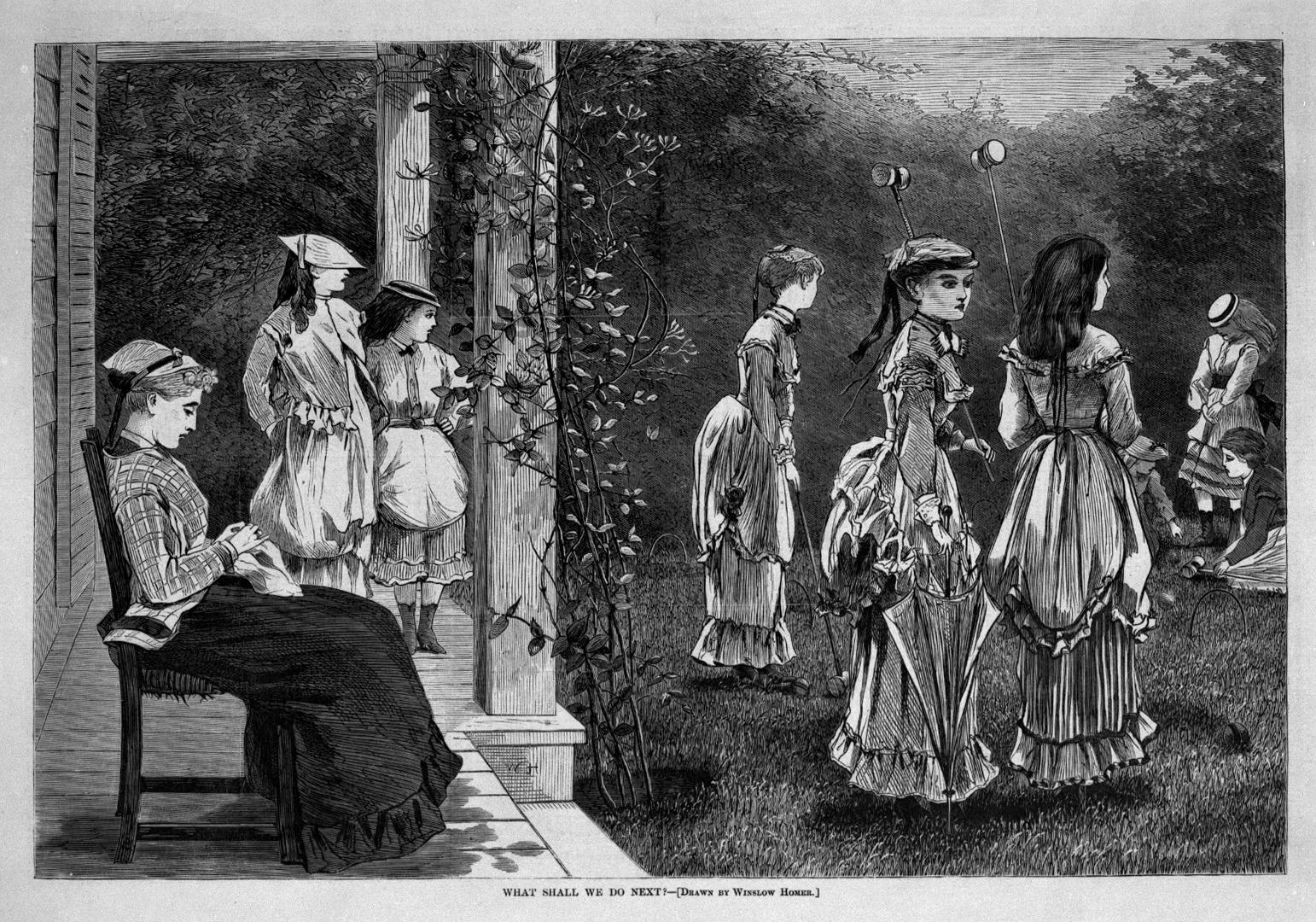What Shall We Do Next?

Brooklyn Museum photograph
Object Label
In this croquet subject, Homer explored the issue of modernity by contrasting country and city “types.” The more sedate, conservative country girls remain on the porch, dutifully attending to sewing or simply watching their fashionably dressed, more adventurous counterparts. The restlessness of the city girls is emphasized by the caption—”What Shall We Do Next?”—while the restraint and discipline of country life is suggested by the young woman on the left who sits erect in her straight-backed chair, ignoring the visitors from the city.
Caption
Winslow Homer (American, 1836–1910). What Shall We Do Next?, 1869. Wood engraving, Image: 9 1/8 x 13 3/4 in. (23.2 x 34.9 cm) Sheet: 10 1/2 x 16 1/2 in. (26.7 x 41.9 cm) Frame: 16 3/4 x 22 3/4 x 1 1/2 in. (42.5 x 57.8 x 3.8 cm). Brooklyn Museum, Gift of Harvey Isbitts, 1998.105.131. (Photo: Brooklyn Museum)
Gallery
Not on view
Collection
Gallery
Not on view
Collection
Artist
Title
What Shall We Do Next?
Date
1869
Medium
Wood engraving
Classification
Dimensions
Image: 9 1/8 x 13 3/4 in. (23.2 x 34.9 cm) Sheet: 10 1/2 x 16 1/2 in. (26.7 x 41.9 cm) Frame: 16 3/4 x 22 3/4 x 1 1/2 in. (42.5 x 57.8 x 3.8 cm)
Credit Line
Gift of Harvey Isbitts
Accession Number
1998.105.131
Have information?
Have information about an artwork? Contact us at